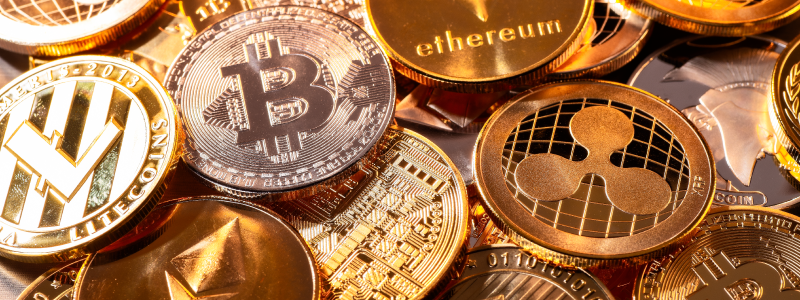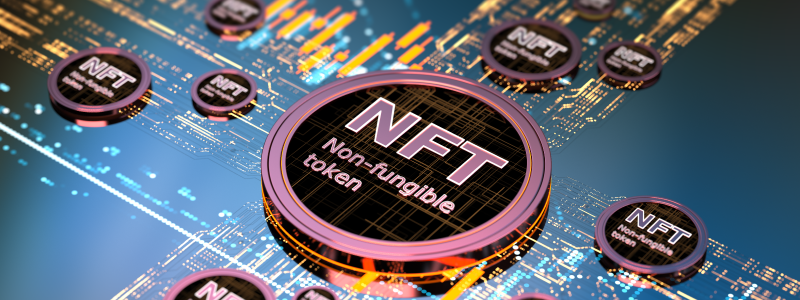How Tokenization Can Improve Operational Efficiencies In Supply Chains
With blockchain-based decentralized applications, the concept of tokenization has come into prominence. Tokenization is defined as the ‘digital representation’ of a particular asset or utility onto the distributed ledger. Tokens are digital assets that can be used to convey all the characteristics of the asset represented by them. For example, a pallet of goods can be tokenized to accommodate all characteristics, such as product specifications, weight, SSCC (Serial Shipping Container Codes), temperature, etc. The benefits of tokenization are enormous, as it allows storage and transfer of value among participants. They include improving operational efficiency, ensuring transparency of processes, and ascertaining the authenticity of the assets behind them. Such tokens can be stored, verified, and transferred, representing real-world business transactions.
Tokens can represent tangible assets like physical goods, and intangible assets like software licensing, voting rights, etc. So, technically, one can represent any tangible or intangible asset of value in a token. Ownership of the token by a particular entity represents the ownership of the supply chain assets represented by it, thus mimicking real-world asset transactions.
The tokenization of physical assets onto the blockchain-based distributed ledger has found applications in many domains, such as consumer goods, financials, and healthcare. For example, medicines in the pharmaceutical supply chains can be tokenized into NFT (Non-fungible tokens), which can then be used to represent real-world transactions among supply chain participants. Upon purchasing medicines at a pharmacy, such NFTs can be transferred to the customer. They can then access all the past transactions related to the same batch of medicines through the supply chains, thus providing them with traceability and authenticity of the medicine. Such ‘Medicine’ NFTs can also be used to store loyalty points, product documentation, and other characteristics.
Thus, blockchain-based tokens represent complete or fractional ownership of the physical asset backing it. It can also be used to represent the transformation of supply chain goods/assets and can closely track the transfer of goods between the partners as well as physical transformations. So, the provenance and ownership of supply chain assets can be proven by adopting tokenization on the distributed ledger.
The diverse types of tokens
The tokenization process involves the creation of tokens, which consist of a string of alphanumeric characters processed via a cryptographic function.
There are three types of tokens, depending on the type of asset they represent.
Fungible tokens

Fungible tokens are identical and can be seamlessly replaced by one another. They are used especially in the case of cryptocurrencies like Ether, Bitcoin, and others, which cannot be distinguished from one another. They are used where individual traceability is not a key requirement; hence, these tokens can be exchanged with anything of equal value or a similar token. ERC 20 (Ethereum Request for Comments 20) standards are used to model fungible tokens.
Non-fungible tokens

Non-fungible tokens are unique and can be used to singularly represent the asset behind them. It is used mainly for supply chain use cases to track transformation and the transfer of physical goods at the individual level. It is used in cases where uniqueness and traceability are needed at the individual asset level, such as digital art, collectibles, or supply chain assets. So, these tokens cannot be exchanged with one another since they are unique. ERC 721 Standards are used to model non-fungible tokens.
Semi-fungible tokens

Semi-fungible tokens act like fungible tokens till they are used. Once used, they follow the properties of non-fungible tokens. For example, gift cards/shopping vouchers are represented as semi-fungible tokens. If unused, a shopping voucher can be exchanged with another one of the same value, like a fungible token. Once used, the same shopping voucher cannot be used with another one. ERC 1155 standards are used to model semi-fungible tokens.
Each of the above tokens depends on smart/token contracts to govern their behavior. Token contracts are used to determine the behavior of tokens for storage/transfer/verification of ownership via encoded business rules.
Tokenization model for supply chains

Supply chains involve the flow of goods, information, and documents across various entities.
Physical goods undergo a transformation from raw materials to semi-finished goods to finished goods. There are complexities around SKU (Stock Keeping Unit) level transformation, as some supply chain legs involve the transfer of assets at different levels, for example, from pallets to cartons to cases. The supply chain also involves the movement of goods from one party to another, apart from accurately representing the physical transformation happening at each stage of the supply chain.
Blockchain has been the preferred solution for supply chain traceability by virtue of features such as immutability, transparency, and auditability. The current approach to blockchain-based supply chain traceability solutions is limited to tracing the movement of goods from one party to another. While this can prove provenance at the particular asset level, it does not map the transformations happening at the supply chain entities.
The process of mapping supply chain goods/assets as non-fungible tokens allows traceability right from raw materials to finished goods. Each batch of the goods involves routing (steps involved in the physical transformation of goods), which can be mapped to a unique non-fungible token. So, the authenticity of products can be verified not only at the finished goods level but also by the components used in their making.
The tokenization process in a supply chain starts with defining the bill of materials as well as routing for the physical goods. Each product level is mapped to a smart contract, which holds metadata related to the physical goods (such as weight, volume, location, codes, etc.) mapped to the non-fungible token. The token can also hold links to product information documents such as drawings, images, specifications, and other documentation. These documents are stored on the IPFS (Inter-planetary file systems) protocol and their links can be stored as product metadata in the token.
Benefits of tokenization in supply chains
Better Liquidity
Tokenized supply chain assets can be made available to the marketplace and traded or exchanged online. It also allows a fractional ownership model of supply chain assets. For example, commodities can be represented as tokens, thus traded on commodity exchanges.
Faster Transactions
Tokenization allows a unique representation of supply chain assets on a common ledger, whether public or private blockchains. Since trust, during the transaction, is established by pre-defined algorithms run by smart contracts, it helps remove market intermediaries involved in the asset management process. This reduces the transaction costs, allowing the transfer of value efficiently.
Transparency
Tokenization allows customers to verify the authenticity of their products and components. Certified supply chains require all components to be verified while establishing proof of origin. Tokenization helps supply chain partners manage inventories represented by tokens in real-time. Supply chain tokens, thus, accurately represent information and value of supply chain assets and allow partners to transfer/store and consume them efficiently and securely.
Efficiency
Tokenization enables streamlining supply chain processes and reduces transaction costs involved in unwarranted reconciliation among partners. It helps in real-time settlement or clearance of transactions, thus improving operational efficiencies.
How can LTIMindtree help?
In summary, the tokenization of supply chain assets into non-fungible tokens opens many opportunities for businesses to get visibility into extended supply chains. Collaboration with partners at each stage of the supply chain is the key to implementing the tokenization described above.
LTIMindtree’s Blockchain CoE can help in addressing business as well as technical aspects of tokenization. A tokenization project starts with the identification of a business case and mapping all ‘visibility’ events affecting characteristics of the supply chain asset being tracked. Once the business process is mapped to cover inter-organizational supply chain flows, the next step involves designing a data model to address metadata-associated supply chain tokens. We can also help with designing and implementing technical and integration architecture for a tokenization project. LTIMindtree’s consulting team can assist with any organizational change management or governance issues that may arise, as tokenization of your supply chain assets extends well beyond your organizational boundaries.
More from Sanket Kulkarni
Supply chains are inherently decentralized, where multiple participants come together to achieve…
Latest Blogs
A closer look at Kimi K2 Thinking, an open agentic model that pushes autonomy, security, and…
We live in an era where data drives every strategic shift, fuels every decision, and informs…
The Evolution of Third-Party Risk: When Trust Meets Technology Not long ago, third-party risk…
Today, media and entertainment are changing quickly. The combination of artificial intelligence,…




